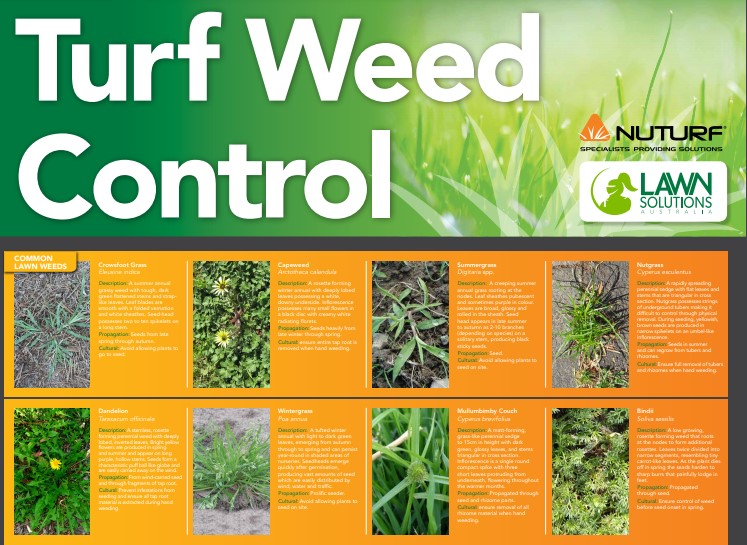Common Lawn Weeds to Look Out For
Quick Links
Common Weeds in Australian Lawns
Chances are, throughout the year, you’ll notice at least one of these common lawn weeds in your lawn.
Even when you one weed, another seems to have a way of creeping into your lawn.
When it comes to treating lawn weeds, it’s always best to tackle them as soon as they appear to minimise the chance of them spreading in your lawn.
The key to controlling lawn weeds early is to identify them as they appear.
Once you know what lawn weed it is, you need to take the right course of action to control it.
Whether it’s using a selective herbicide, all-purpose herbicide or hand removal, take action early before the weeds have the chance to seed and spread.
Once you have the lawn weed under control, regular lawn maintenance will help your lawn keep any further weed infestations under control.
A lawn with a thick growth habit that is cut to the right height will naturally out-compete any lawn weeds itself.
Top 10 Common Lawn Weeds
1. Crowsfoot Grass
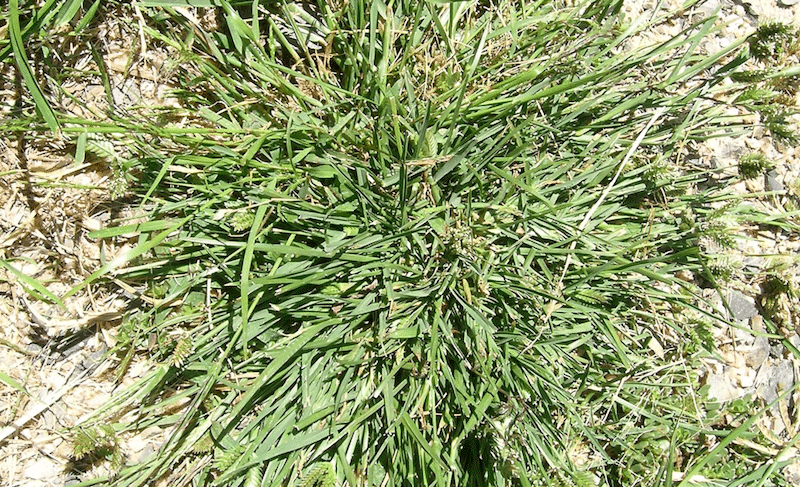
Identifying Crowsfoot Grass
Crowsfoot Grass is a tufted, hairless annual that grows up to 60cm high with a tenacious fibrous root system.
Their leaves are shiny, green and smooth, while their seed heads are borne on upright or angled stalks 20 -60 cm long.
They have numerous flower spikelets which are densely arranged in a loosely overlapping manner.
Crowsfoot Grass weed seeds from late spring through to autumn. The seeds are reddish-brown in colour and enclosed within the old straw-coloured floral bracts.
Crowsfoot Grass seeds germinate when soil temperatures reach 15 to 18°C and there is adequate moisture and light.
It is very competitive in thin, open turf and turf subject to heavy foot traffic. Crowsfoot Grass is a troublesome weed on golf tees, fairways and sporting fields.
Description – Crowsoot Grass
Crowsfoot is a major weed in tropical areas of the world, occurring in over 40 different types of crops.
In Australia, it occurs in all mainland States and is widespread in NSW.
A suspect of poisoning stock, crowfoot is a weed of pineapples in QLD, but in other states is mainly a weed of lawns and gardens.
Although sometimes called “crab grasses” Crowsfeet Grass does differ as Crabgrass roots have stem nodes that are hairy, have fewer inflorescences and only 2 florets per spikelet.
How to Control Crowsfoot Grass
On isolated plants, hand removal is an option when the soil is soft.
Or you can use a high strength mixture of Glyphosate with a Weed Wick or Paintbrush and only touch the leaves of the weed.
On major infestations consult with a contractor to spray the area.
2. Capeweed
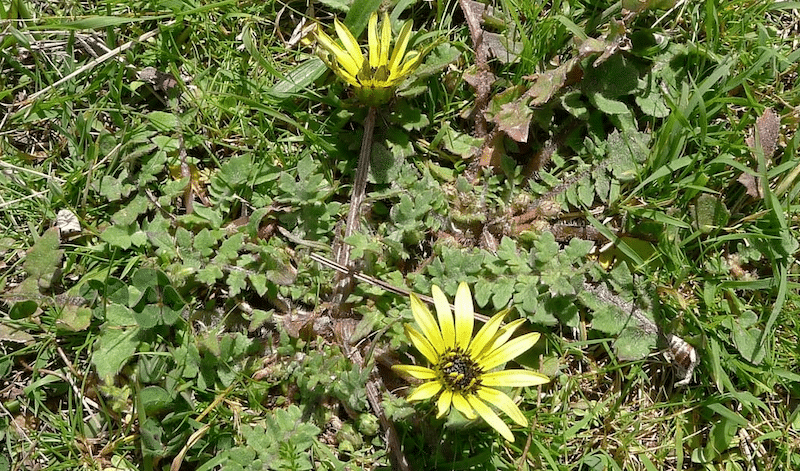
Identifying Capeweed
Capeweed is a low growing, short-lived plant with semi-upright flowering stems that grow up to 30cm tall.
Its flowering stems are loosely covered in white woolly hairs. The leaves are mostly basal and somewhat elongated in shape with toothed to deeply lobed margins.
These leaves (5-25 cm long and 2-6 cm wide) have hairless or slightly hairy upper surfaces that are green in colour and whitish with densely felty hairy undersides.
The flowering stems are 5-25 cm long and bear a single flower head. These flower heads (2-6 cm across) have a hemispherical base that is surrounded by several rows of bracts.
The greenish coloured bracts are slightly elongated in shape: the outer ones with hairy tips and the inner ones with membranous margins.
Each flower head also has numerous tiny dark purple coloured tubular flowers in the centre that are surrounded by several large petals.
The petals, 2-2.5 cm long, are pale yellow with bright yellow bases and greenish or purplish coloured undersides.
Flowering occurs mainly during late winter and spring. The dark brown seeds are oblong in shape (2-2.5mm long) and densely covered in a brownish or pinkish coloured fluffy wool.
Description – Capeweed
Capeweed, A. Calendula, is a widespread weed of cultivation and pastures occuring in all states.
The related A. prostrata (Salisb.) J. Britten, occurs in QLD and VIC and is prostrate, rooting at stem nodes, with “seeds” that are never densely woolly.
How to Control Capeweed
Use a Lawn Solutions All Purpose Weed Control to handle Capeweed.
3. Summer Grass
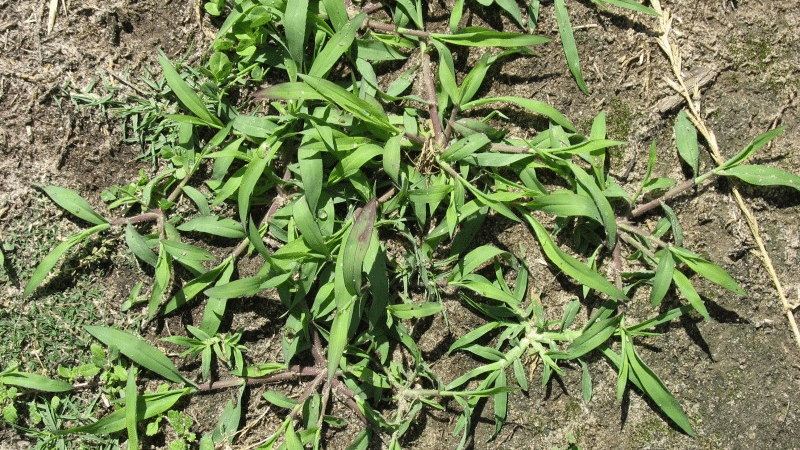
Identifying Summer Grass
Known as Crabgrass in the United States, there are two species of Summergrass in Australia; D. ciliaris and D. Sanguinalis.
The species are distinguished by minute differences including the length of the upper glume.
In D. ciliaris the upper glume is greater than half the spikelet length, and in D. sanguinalis the upper is less than half the spikelet length.
Annual weeds, Summergrass has fibrous roots and clusters of soft stems which grow close to the ground and may root at the nodes. The leaves are soft and hairy.
Inflorescence composed of 3-13 spikes spreading out from a slender erect stem. Their spikelets are flat, in pairs, with unequal pedicels pressed against one side of the rhachis.
Summer grass germinates when soil temperatures reach 12 to 15°C at 10cm depth.
Alternating dry and wet conditions at the soil surface in the spring encourages germination.
Summer grass is likely to outcompete turf grass when it is thin and open, the mowing height is incorrect and light frequent irrigations are applied.
Description – Summer Grass
D. sanguinalis is a major weed throughout the world in both temperate and tropical crops, although sometimes utilised for grazing.
Summergrass grows throughout most of NSW and other states, except QLD. D. Ciliaris occurs over much of the same area as D. sanguinalis but it also grows in QLD as a weed in pineapple plantations and orchards.
Both species are weeds of gardens, lawns orchards, cultivation and wastelands.
These species are sometimes confused with Eleusine indica crows foot grass, but this species does not root at the nodes, has hairless leaves, fewer spikes and several florets per spikelet.
How to Control Summer Grass
On isolated plants, hand removal is an option when the soil is soft.
Or you can use a high strength mixture of Glyphosate with a Weed Wick or Paintbrush and only touch the leaves of the weed.
With major infestations, consult with a contractor to spray the area.
4. Nutgrass

Identifying Nutgrass
Nutgrass is a long-lived grass-like plant usually growing 20-50 cm tall.
It produces a network of creeping underground stems on which form dark coloured egg-shaped or oval tubers (10–25mm long) with a brown fibrous covering.
The tubers are white on the inside when young and become reddish-brown as they mature.
Flowering stems stand upright, are slender (1-2mm thick), rigid, smooth and are three angled in their cross-section.
The very narrow leaves (7.5–20 cm long and 2–6 mm wide) are borne in a tuft at the base of the stems. They have entire margins and pointed tips.
Both the leaves and stems are hairless and somewhat glossy in appearance.
Their seed head is subtended by two to four green leafy bracts and has 3-8 branches of varying length (up to 10 cm long).
Each of these branches carries an irregularly shaped cluster of several flattened reddish-brown or purplish-brown coloured flower spikelets towards its end.
These elongated flower spikelets (10-25 mm long and 2-2.5 mm wide) are loosely arranged and have 10-40 tiny flowers. Flowering occurs mostly during summer and autumn.
Description – Nutgrass
A very troublesome weed, Nutgrass is problematic for crops, orchards, vineyards, fallows, lawns, footpaths, gardens, parks, pastures and waste areas.
It is widely naturalised and common in South-Eastern Qld, Eastern NSW, ACT, Victoria and some parts of SA and WA.
How to Control Nutgrass
Apply Sedgehammer Herbicide to take control of Nutgrass.
5. Dandelion
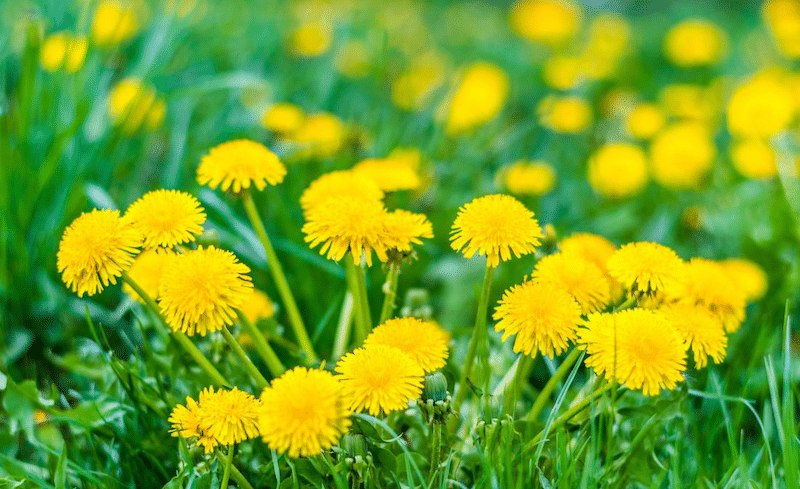
Identifying Dandelion
Dandelion weeds are a rosette-forming, short-lived perennial with a thick taproot, and containing latex.
Its leaves are divided with the margins irregularly toothed. The tips of each lobe point towards the leaf base.
The Dandelion has bright yellow flowers on leafless, hollow peduncles. Often it is the yellow flowers that are the key identifier for these weed species.
The weed seeds are striped with weak spines near the apex and terminating in a beak (longer than the seed) which bears a pappus of silky white hairs.
These white hairs are easily carried in the wind to further spread the seeds.
What is Dandelion
T. officinale, Dandelion, occurs throughout temperate regions of Australia, more common in the cooler and higher rainfall areas.
It is a widespread weed of lawns, roadsides, wasteland and occasionally of cultivation and pastures.
The leaves, whilst somewhat bitter are edible as a salad green and the roasted roots can be ground for a coffee alternative. Dandelions are suspected to cause hay fever.
How to Control Dandelion
Use Lawn Solutions All Purpose Weed Control to take out those pesky Dandelions.
6. Wintergrass

Identifying Wintergrass
Winter Grass is an occasional, short-lived perennial lawn weed that grows up to thirty centimetres tall but is usually smaller.
With a tufted habit, Wintergrass has light green leaves that are soft and have a small membranous ligule.
It has an open pyramid shape towards the top, just above the leaves and has spikelets of three or four florets towards the ends of its branches.
Winter grass requires a large amount of light and temperatures between 10 – 16°C to germinate.
Description – Wintergrass
Winter Grass, P. annua, is widespread in Australia as a weed of cultivation, lawns and wasteland.
Similar to Winter Grass, Roughmeadow Grass is a rarer species with a longer ligule (4-10mm) and a tuft of hairs at the base of the lemmas.
The Roughmeadow Grass is distinguishable by its perennial stoloniferous habit.
How to Control Wintergrass
On isolated plants, hand removal is an option when the soil is soft. Or you can use Amgrow Wintergrss a weed control killer with a Weed Wick or Paintbrush and only touch the leaves of the weed.
Avoid allowing Wintergrass to seed as it will continue to return each year. On major infestations consult with a contractor to spray the area.
7. Mullumbimby Couch

How to Identify Mullumbimby Couch
Mullumbimby Couch is a long-lived grass-like plant with underground runners and upright flowering stems, reaching up to 40 cm tall.
Its upright stems are three angled in cross-section and only 0.5–1.5mm thick.
The bright green leaves, 2.5–12.5 cm long and 1-3 mm wide, are hairless and sheath the stem at the base.
Mullumbimby Couch’s leaves have entire margins, pointed tips and are clustered towards the base of the flowering stem. The seed heads (6-7mm long) are pale green with egg-shaped spikes.
These flower spikes, 6-7mm long and 6-8mm wide, have three or four green leafy bracts at the base and contain numerous small flower pikelets.
The flower spikelets consist of a bract 1.5-3 mm long and a single tiny flower which flowers throughout the year.
The seeds are yellow to reddish-brown in colour and topped with a small projection 1 – 1.5 mm long. They are often enclosed within papery whitish bracts.
What is Mullumbimby Couch
Mullumbimby Couch, a widespread sedge, is a common weed of habitation (gardens and lawns), disturbed sites, waste areas and wetter pastures.
It has also invaded disturbed wetlands, swamps and creeks.
How to Control Mullumbimby Couch
Unfortunately, Mullumbimby Couch is a persistent weed and is extremely difficult to get rid of.
The best course of action would be to consult a weed control expert who has access to professional-grade herbicides, however, Sedgehammer has been said to have an effect in controlling Mullumbimby Couch.
Alternatively, you can try removing the weed by hand but make sure not to leave any of the weed roots behind as the Mullumbimby Couch grass weed will simply continue to reappear.
8. Bindii
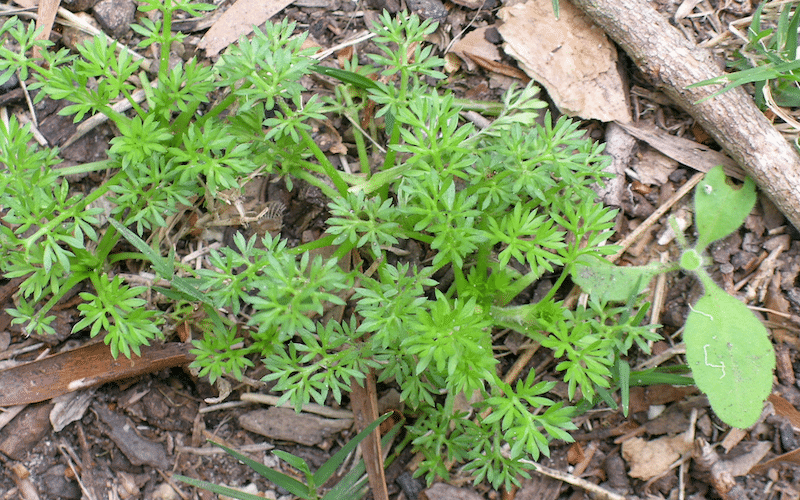
What Does Bindii Grass Look Like
Bindi is a small rosette shape annual with stolons forming additional rosettes. Their leaves are finely divided on short petioles.
The flower heads are slightly convex (not globular) and sessile in rosette centres forming burrs with short spines.
As the plant dies off in spring the seeds harden to sharp burrs that painfully lodge in feet.
What is Bindii Grass
The bindi is principally a weed of lawns and turf. Familiar to many barefooted children, Bindii occurs primarily in eastern areas of NSW as well as QLD, VIC, SA and TAS.
How to Control Bindii Grass Weeds
To save your feet from the prickly surprise of the bindi, spray them with either Amgrow BinDie, or the Lawn Solutions All Purpose Weed Control.
9. White Clover
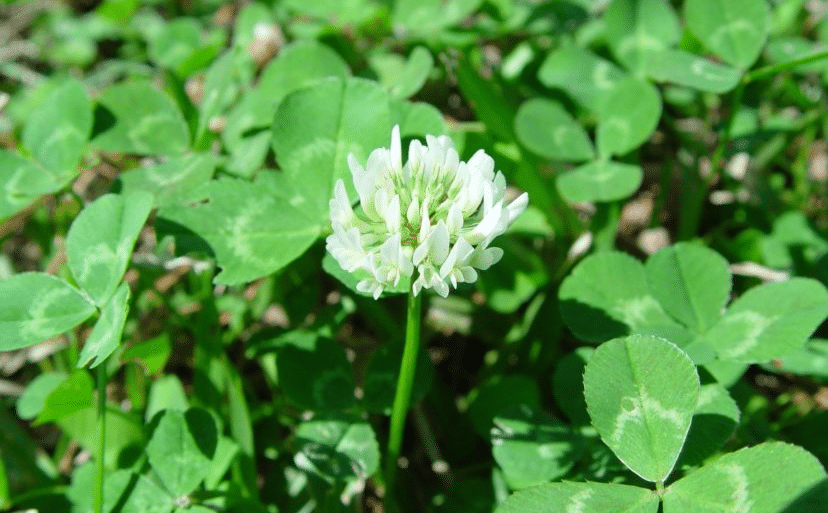
How to Identify White Clover
White Clover is a perennial weed that grows close to the ground.
Its leaves are tear-shaped with a reddish stripe across them and grow in sets of three.
The flower heads are white with a tinge of pink or tan that comes through with age.
White Clover can often form mats as its stems grow up to 18cm a year.
Description – White Clover
The appearance of White Clover can signify that your soil is lacking in Nitrogen.
They are also the favourite flower for bees.
While you may wish to encourage bees in your yard, it’s important to address the Nitrogen issue in your lawn and encourage bees away from where children play.
How to Control White Clover
White Clover is relatively easy to remove by hand as it grows in clumps.
Alternatively, you can use Lawn Lovers Weed Control to control this weed.
10. Cudweed
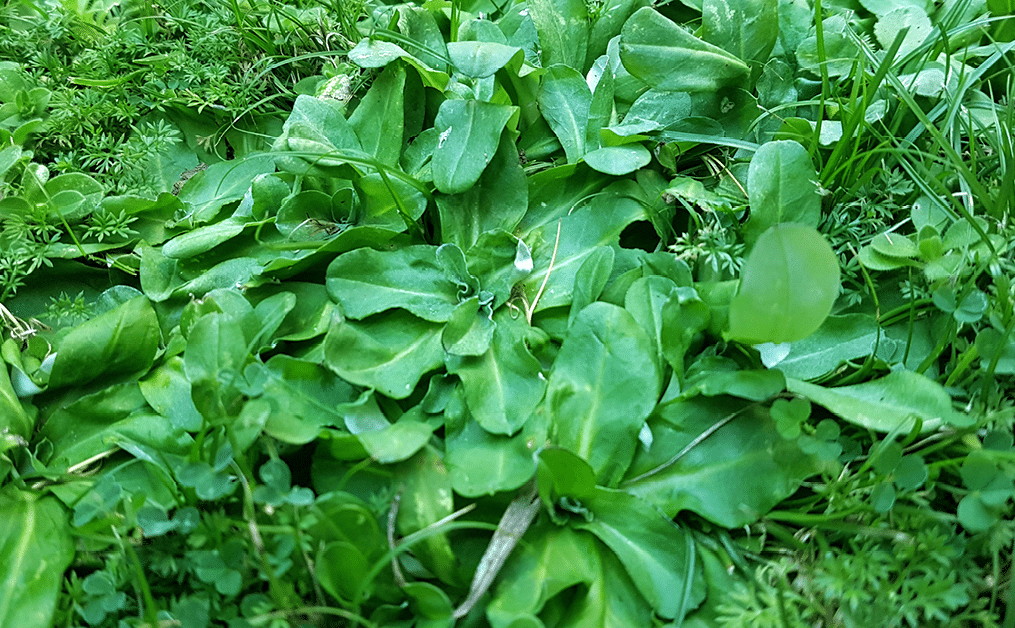
What Does Cudweed Look Like
Cudweed is a broadleaf weed that grows in a rosette form with a dull, light green leaf surface and a furry white underside.
Once they have established, they will further grow into clumps and will sprout pink and purple flowers during summer and spring.
As Cudweed matures, the plant will rise from its basal growth and develops stems and upward growth.
Description – Cudweed
Cudweed has two species that are common in Australia, G. coarctatum and G. americanum.
The main difference between these two species is that G. coarctatum has white hairs on the underside of its leaves only, whereas G. americanum can be woolly all over.
These species tend to sprout white to tan flowers, rather than pink to purple.
How to Control Cudweed
Cudweed can be quite challenging to control in turf, especially as it grows at a different rate and texture to grass.
Using Lawn Solutions All Purpose Weed Control will help you establish dominance over this weed.
Turf Weed Control Guide
And while it’s relaxing and enjoyable, it can also be frustrating to battle against these pesky weeds.
That is, until now!
Introducing our turf weed identification chart: a comprehensive guide detailing all of the most common grass weeds and how they propagate as well as tips on how to control them.
Keep it in the garden shed for quick reference.
Click here to download – Turf Weed Control Guide
More Information
- grechsturf.com.au/content/lawn-weeds/
- atlasturf.com.au/lawn-care-tips/lawn-weeds-grass/
- buyturfonline.com.au/common-lawn-weeds/


Our Turf
TifTuf Bermuda
Buy Turf Online © 2019 All Rights Reserved. | Proudly Designed and Developed by Sydney ICT

